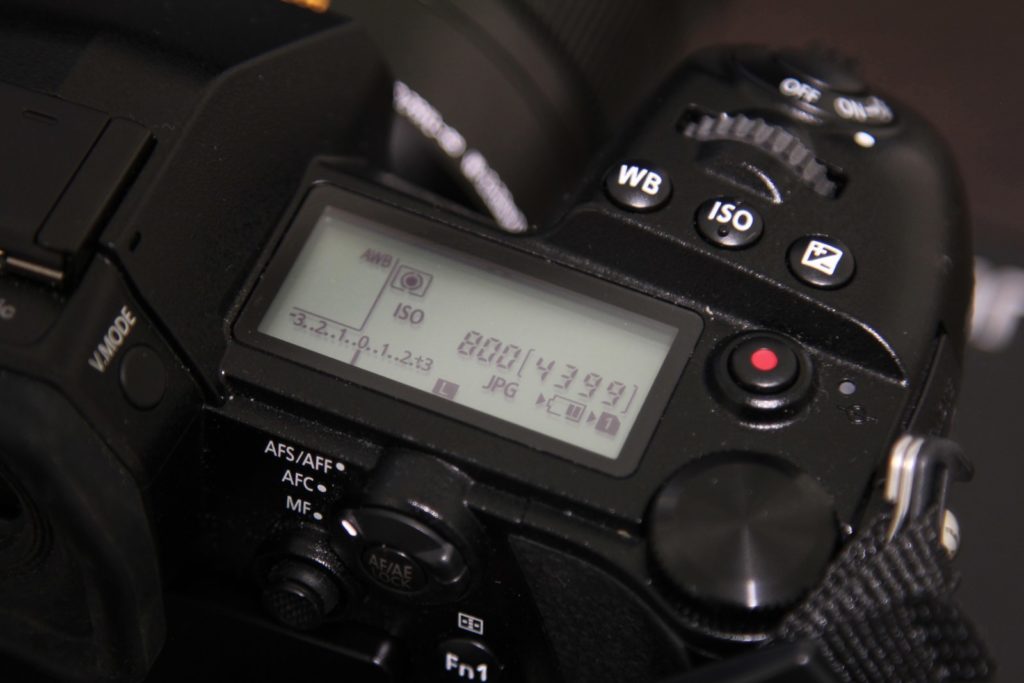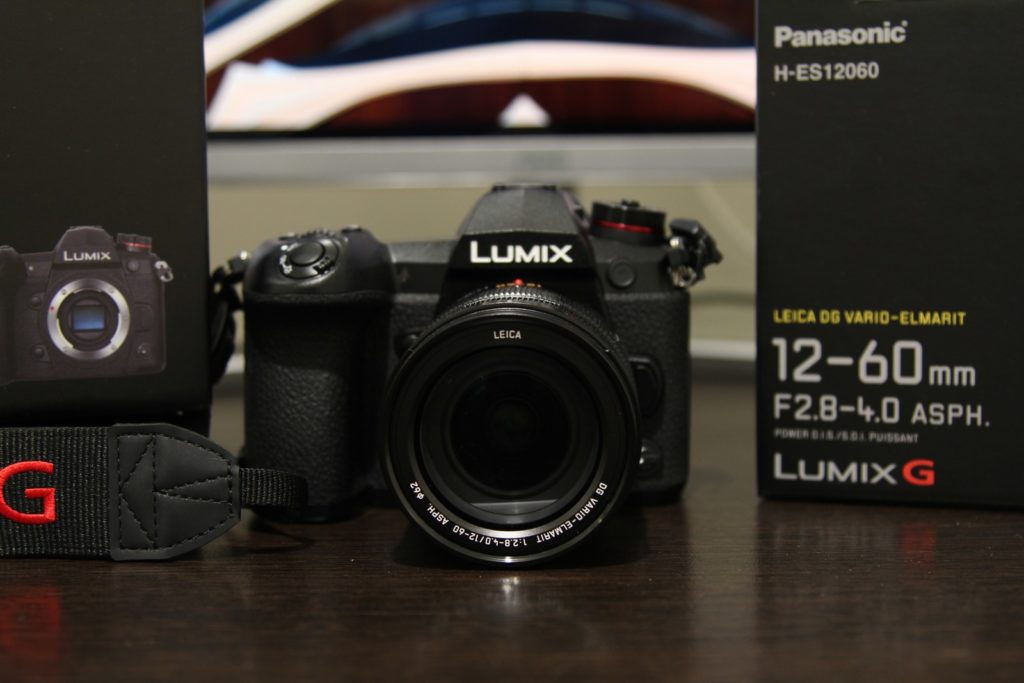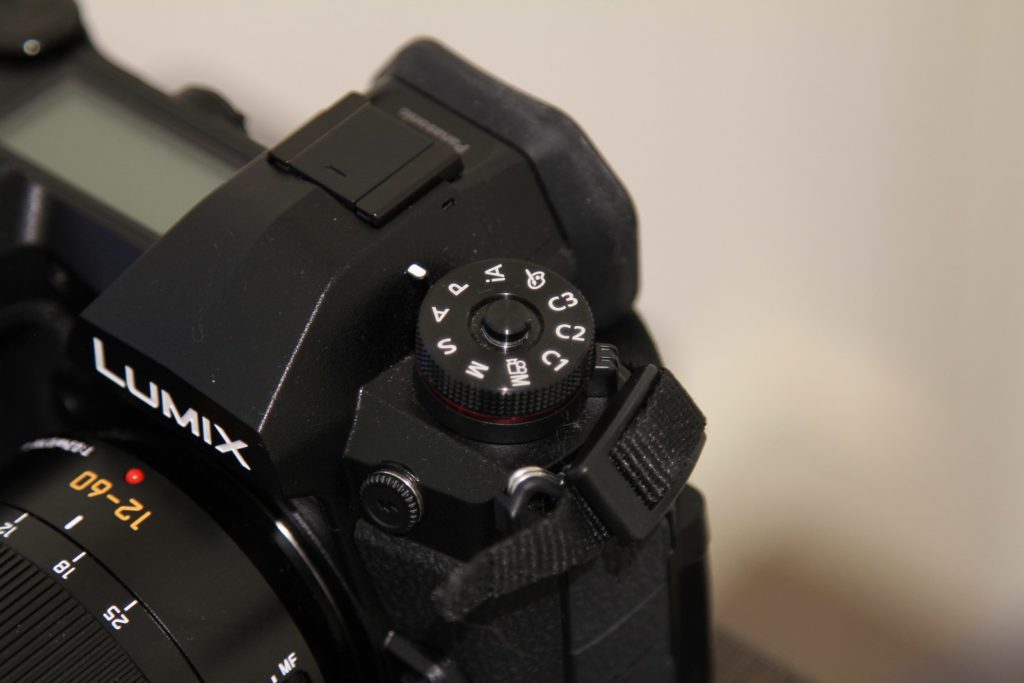Panasonic recently launched their new micro four thirds camera the Lumix DC-G9 (or just G9) and we got our hands on one! As such I’ve spent the last few weeks putting it through its paces including a trip to America and endless fidgeting with buttons, dials and menu options. So let’s get into it and see whether or not she’s worth the wait and the dollarydoos!

To begin with the Panasonic Lumix G9 has an RRP of $2,500 AUD just for the body alone. You can get it in two separate kits, one with a 12-60mm f2.8-4 lens (Leica Kat) and the other with a 12-35mm f2.8 lens (Pro Kit). You can certainly find the G9 for cheaper than RRP though with many of the usual photography shops selling them for $2,300 AUD.
I chose the 12-60mm kit as I mostly seem to take either landscapes or portraits and prefer to only travel with one lens so it handily does both quite well. Our previous camera, a Canon 550D served me well but it was time for an upgrade. Canon’s all but refused to make a DSLR that can record in 4K unless you buy their EOS 5D Mark IV, the EOS 1D C or the EOS 1DX Mark II which are far, far more expensive and still don’t do 4K at 60FPS like the G9 does.
As such it was time to say goodbye to Canon and Hello to the world of micro four thirds cameras before we set out for our American holiday. I was quite hesitant at first. I was considering ditching the whole idea too as many of the micro four thirds camera that have LVF’s (Live Viewfinders) aren’t particularly good. With small screen sizes and slow refresh rates (30-60FPS) when you are coming from an optical viewfinder it makes for a big difference.
I tried some of them out only to be sorely disappointed. While looking through the viewfinder even slow panning would result in it blurring to the point of uselessness. However Panasonic’s G9 has basically solved this problem with their fantastic new OLED LVF which we’ll get to later.
Table of Contents
What’s In The Box

The full specs for the G9 are here. Inside the body box you’ll find:
- Panasonic Lumix DC-G9 Body
- Camera Strap
- USB Cable
- Battery
- Battery Charger
- Manuals
Nothing super out of the ordinary there and it includes everything you’d want or need. The lens comes in its own separate box and as said, I chose the 12-60mm kit. One thing I can’t overstate is how awesome both the body and the lens are at stabilization.

The G9 body itself has a 5 degree sensor stabilization which makes taking video very forgiving to shakes or when you’re zoomed in a bit. If you buy other lens’ they may not have in built stabilization which is one of the main reasons I chose to go with the kit lens. That and it helps to get combo discounts.
Look And Feel

The G9 looks and feels exactly like a good and proper DSLR. While many micro four thirds cameras are considerably smaller and lighter the G9 is essentially just as big as many DSLR camera bodies. It is almost identical in size and weight to our previous Canon 550D body. Whether this is a pro or a con to you will depend. I love that it has weight, feels sturdy, solid as a rock and allows you plenty of room for a nice big screen, nice big LVF and a good deal of manual dials and such.
On the other hand it is obviously nowhere near as light as say, a phone. You can’t have everything though! With the micro four thirds lenses though you get some benefit as these are smaller than something like Canon lenses. This shaves off a bit of weight ~250g and actually made a lot of difference when having the camera around my neck. No longer did my neck ache after a few minutes/hours like it would with the Canon.
The hand grip is perfect with a great feel and nice deep finger recesses. The camera is super comfy to hold, use and I got used to the new controls exceptionally quickly. Especially considering I’d been using the Canon exclusively for 7+ years.
Ease Of Use

I’m just going to come out and say it. All camera interfaces are trash. They are just garbage and should be wiped clean off the face of the Earth. If you were to put camera interfaces on a smartphone I can guarantee no one would use it! But for some reason it’s acceptable with cameras… go figure. </rant>
Anyway! As far as camera interfaces go and the G9’s ease of use it’s fine. The menus seem to mostly make sense, the interface isn’t too clunky, most things are laid out logically and so on. You’re still going to have to read a booklet manual before understanding what half the random as crap icons are but as stated, this is no worse than any other camera out there.
Panasonic, if you’re reading this, please rebuild your entire UI from scratch for the digital age! Look at smartphones and go from there. I’m not saying all physical buttons should be removed – please keep them! – but things like settings menus, help hints, interface design, iconography and so on are all currently stuck in 1980. They need to be redone ASAP.
I’d also like to note that the G9 doesn’t have USB Type-C on it. This is also trash in 2018. Panasonic, get with it. I’m glad they have USB on the side for file transfer and also that it is USB 3.1 Gen 1 at least, however it should be USB Type-C.
OLED LVF

As this is such a huge advance I wanted to give the LVF its own dedicated section. This new addition is a game changer. The screen is big. It’s clear, bright and has an excellent frame rate. Although I will note that for some stupid reason Panasonic sets it to 60Hz by default. Why????
Not a huge deal as you can change it in the settings but unless you’re drilling through every setting when you get your new camera many might completely miss this. The LVF would be at 60Hz and they’d be missing out on a huge advantage.
So to anyone who has just bought the G9, go into your settings and change the LVF refresh rate to 120Hz and be amazed at the way better viewfinder experience!
Besides the odd default this is definitely one area that Panasonic got 100% right. I’d consider this the new benchmark for all other digital viewfinders from now on. I’d honestly like to see others compete and get this pushed up to 240Hz as even though 120Hz is brilliant, you can still make it blur slightly if you’re panning left/right very quickly. For now though 120Hz is brilliant.
Photo Functionality

Taking photos with the G9 is fantastic. About the only thing I could complain about is that the shutter button is rather sensitive and takes a bit to get used to. After the first day of use though it wasn’t a problem.
The in built top LCD screen is handy can even light up while the in body stabilization allows you to take quite long exposures without any blurring. It can also help during the day as you can drop the ISO down and still not get blurring with the slower shutter speed. The auto focus is excellent and fast with super adjustable settings that are easy and quick to alter.

With many photo modes including the 80MP multi shot, 4 and 6K burst modes and even various filters there’s something to please most photographers. Everything works as advertised and expected with great results as you can see in the samples below.
These were taken while we were away. All of them are taken straight from the camera with absolutely zero editing or even colour adjustments. You can also click on them to download the full JPEG files.
Video Functionality
The 4K 60FPS video recording is quite frankly stunning. The dual lens and body stabilisation means you can quite easily stand still and get fantastic results as can be seen above. I filmed this little critter by simply standing still and holding the camera in my hands up to my eye. The result is essentially smooth video footage with a mild drift that I don’t think detracts from the overall film at all.
This also enables you to zoom fully in and still capture very smooth video. At a pinch you can simply rest the camera on bench, fence or anything else you can find as a makeshift tripod and the result is even smoother.
You can also use a fantastic feature that uses the 4K sensor but only records a 1080p subset of it. You can chose for it to pan left to right, bottom to up or even zoom in or out all while the camera sits perfectly still. Have a look at the below videos for a demonstration of each. As the camera is only recording a subset of the full 4K sensor these are all in 1080p.
Do note though that you can’t shoot video indefinitely unlike the Panasonic GH5. That being said the time limits aren’t too horrible unless you want to use this as a dedicated video camera. If that is your intent, I’d recommend going for the GH5.
- 4K@60FPS, 150Mbps = 10 Minutes Limit
- 4K@50FPS, 150Mbps = 10 Minutes Limit
- 4K@30FPS, 100Mbps = 30 Minutes Limit
- 1080p@60FPS, 28Mbps = 30 Minutes Limit
Battery Life

I never had any trouble shooting throughout even long days. Taking hundreds of photos with the screen brightness decently high, recording full 4K@60FPS and being out all day proved to be no problems at all.
I would recommend putting the camera into a more power saving style setup once you do get it as by default the screen stays on for a long time and is at full brightness which mostly isn’t required. Having the screen on half brightness is fine and helps greatly extend the battery.
The other fantastic benefit of the G9 is that it can be charged via its USB port! This means you don’t have to take the charging bank with you or even a charging cable. Just use the same USB cable for both data transfer and charging.
You can also turn the camera on and shoot while charging the camera meaning you can have it running forever if you wish. The other awesome thing is that as it charges via USB, any USB charging battery bank will also charge the camera. This means if you’re regularly out for long days and doing more recording than the battery can handle you just take a standard battery bank with you. You can even charge the camera via your laptop or even via your phone if you’re super desperate.
These new conveniences were a breath of fresh air and meant that I could tread the camera just like another mobile phone. I would transfer the files off the camera each day and then just leave it plugged into the laptop via the USB cord to let it charge. Very handy!
Companion App

Their Android App works. That is unfortunately about the best thing I can say about it as getting it to work is slow – OMG SO SLOW!!! – unclear and very frustrating. It does eventually work, but the app is ridiculously old, out of date and just plain ugly as sin.
Panasonic, you need to fix this ASAP. There is no excuse. You are a huge, huge company and the app you have created is ancient. Update it. Rebuild it from scratch with a new, modern UI and focus on automated features, speed and intuitive design.
As an example I would love to have it just auto detect when the camera gets turned on and as I shoot, the files get automatically transferred to my phone in small/medium/original formats via Wi-Fi. All without any touching of my phone. This way if I take a couple of shots with the camera, turn it off and pull out my phone, there are the photos ready to share.
This is one section where the G9 falls flat on its face. The app does work and can do what it says it does… but I never use it because it’s so atrocious and cumbersome. Panasonic, fix this now!
Panasonic G9 Conclusion

The Panasonic Lumix G9 is a fantastic camera and I have no regrets in buying it after extensive use. While there are other cameras out there such as the Sony’s with their full sized sensor the Panasonic has some very critical (to me at least) features that still make it the winner in my eye.
The electronic viewfinder is second to none and has a huge impact on the overall experience, especially if you’re coming from an optical one. The fact that the screen flips out and swivels all the way around allowing for self filming. The huge, ridiculous stabilization abilities. The really proper grip and size that make it a pleasure to shoot with for a long time. The long battery life and easy USB charging.

The 4K@60FPS video also elevates it just a cut above the rest which are all at 30FPS meaning you have more room to move when editing. The price isn’t super cheap but is about what you’d expect for its abilities and quality. With additional software and hardware features such as Wi-Fi, Bluetooth, dual SD cards, multiple customization buttons and more it should have just about enough to please everyone.
If you’re stuck in the DSLR mirror world and have always discounted mirrorless I’d advise taking another look at the G9. You’ll be shocked at what it can do, just don’t forget to set that LVF to 120Hz!
The benefits include: 1) How to get those silky smooth videos that everyone loves to watch, even if you're new 2) How to fly your drone, from taking off to the most advanced flight modes 3) Clear outlines of how to fly with step-by-step instructional demonstrations and more 4) Why flying indoors often results in new pilots crashing their drone 5) What other great 3rd party apps are out there to get the most out of your drone 6) A huge mistake many pilots make when storing their drone in the car and how to avoid it 7) How to do all of these things whilst flying safely and within your countries laws.











0 Comments